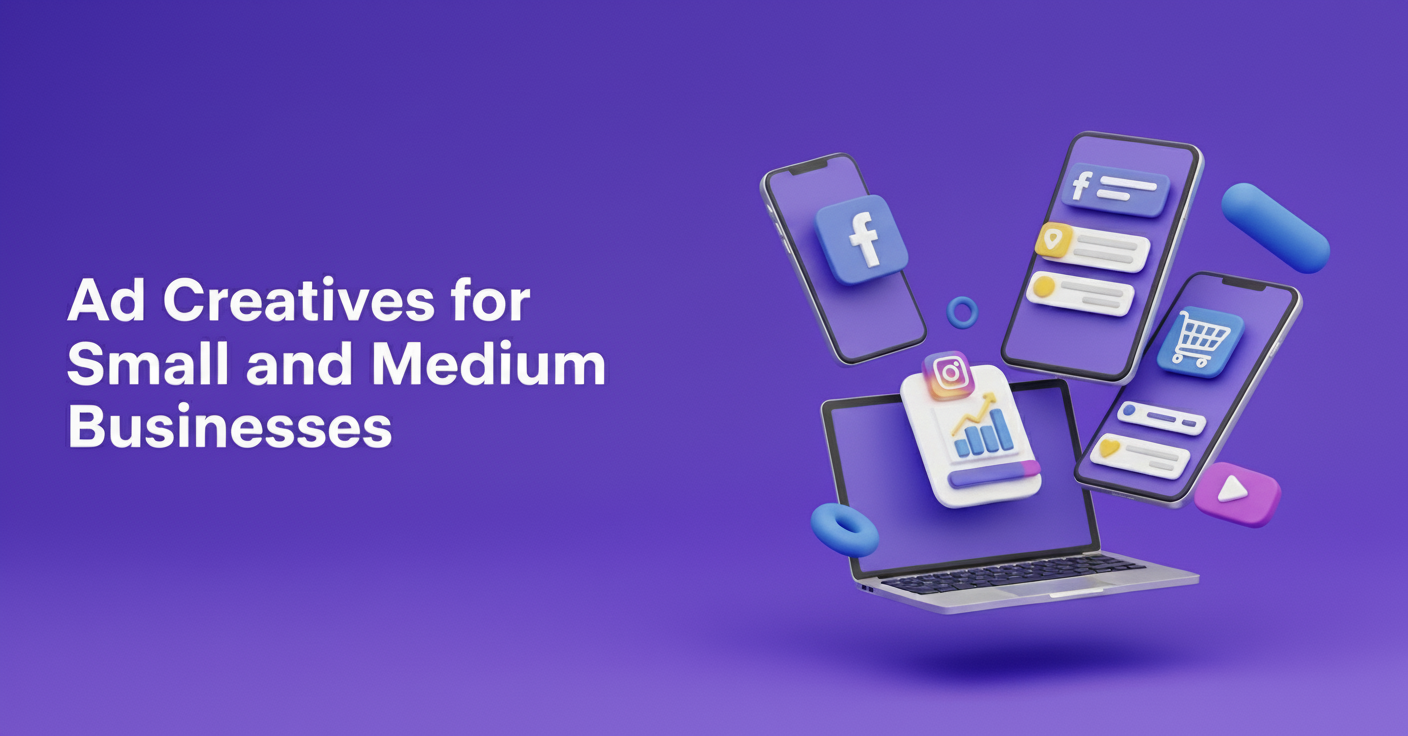You’re posting on social media every day. You’re trying to keep up with Instagram, Facebook, LinkedIn, and maybe TikTok too. But here’s the thing: your posts look different every single time.
One day it’s a red background. The next day it’s blue text on white. Then you throw in a random font because it looks cool. Your followers are confused. They don’t recognize your brand anymore.
I’ve been there. Three years ago, I was scrambling every morning to create social media posts for my small business. Each post took me 45 minutes. I was exhausted. My Instagram looked like five different people were running it.
Then I discovered branded templates. My posting time dropped to 10 minutes. My engagement went up by 67%. People started recognizing my posts instantly in their feeds.
Let me show you why you need a system for your social media templates.
TL;DR
- Posting daily on social media without a system leads to inconsistent branding, wasted time, and low engagement.
- Branded social media templates, pre-designed graphics with your colors, fonts, and logo help you stay consistent, save time, and boost recognition.
- Start small with 3–5 templates, build a repeatable workflow, and scale your presence confidently.
- In 2025’s AI-saturated feeds, visual consistency is your biggest advantage.
What Are Branded Social Media Templates?
Think of templates as your social media uniform. They’re pre-made designs that have your colors, fonts, and logo already in place. You just swap out the words and images.
Instead of starting from scratch every time, you open your template, change the text, and you’re done. It’s that simple.
These templates work on any platform. Instagram posts. Facebook graphics. LinkedIn banners. Twitter images. Pinterest pins. You name it.
Why Most Businesses Mess This Up
Let me tell you about Sarah. She runs a bakery in Portland. She posts beautiful photos of her cakes on Instagram three times a week.
But here’s her problem: every post looks completely different. Sometimes she uses pink text. Other times it’s purple. Her logo appears in different corners. The fonts change constantly.
Her followers scroll right past her posts. Why? Because they don’t recognize her brand. In a feed with hundreds of posts, people need to spot your content in half a second.
Sarah isn’t lazy. She’s just trying to be creative. But creativity without consistency is just confusion.
The Real Cost of Not Having Templates
Let’s talk numbers. The average person uses about 6.83 different social media platforms every month. That means your audience is seeing thousands of posts daily.
Without templates, you’re facing these problems:
- Time drain: Creating each post from scratch takes 30 to 60 minutes. That’s 15 hours a week if you post three times a day. That’s almost two full workdays just making graphics.
- Zero brand recognition: When every post looks different, people don’t remember you. They scroll past without stopping.
- Burnout: Designing new graphics every single day is exhausting. Most business owners give up after a few months. Then their social media dies.
- Wasted money: If you’re paying a designer $50 per post, that’s $150 a day. Over $4,500 a month. That’s rent for most small businesses.
- Lost sales: Inconsistent branding means people don’t trust you. They won’t buy from a brand that looks unprofessional or disorganized.
How Templates Changed My Business
I started my consulting business in 2021. For the first six months, I created every social post manually. I used Canva. I’d stare at the blank screen for 20 minutes trying to decide on colors.
My Instagram had 340 followers. Nobody engaged. I got maybe two likes per post.
Then I hired a designer. She created 15 templates for me. Different layouts, all with my brand colors and fonts. It cost me $400 and it gave me something priceless: a consistent, repeatable system. If you want to build a similar setup yourself, here’s a guide on Affordable Design Systems for One-Person Brands.
Here’s what happened:
Within three months, my followers jumped to 2,100. My engagement rate went from 0.6% to 4.2%. People started sending me messages saying they loved my “aesthetic.”
But the biggest change? My stress level. I went from dreading social media to actually enjoying it. I could create five posts in 30 minutes on Sunday and schedule them for the week.
That $400 investment paid for itself in one month through new clients who found me on Instagram.
The 7 Types of Templates Every Business Needs
You don’t need 100 templates. You need the right ones. Here’s what I use:
1. Quote Graphics
These are your bread and butter. A simple background with text. Use them for tips, advice, or inspiration. They’re easy to create and people love sharing them.
2. Product Showcase
Show off what you sell. These templates have space for a product photo, a short description, and your logo. Perfect for e-commerce or service providers.
3. Announcement Posts
Got news? A sale? A new product? These templates grab attention with bold text and bright colors.
4. Behind-the-Scenes
People want to know the real you. These templates work great for photos of your team, your workspace, or your process.
5. Educational Carousels
Multi-slide posts that teach something. Instagram loves these. They keep people on your post longer, which boosts your reach.
6. Story Templates
Instagram and Facebook stories need different dimensions. Create templates specifically for the vertical format.
7. Video Thumbnails
Even your videos need consistent branding. Create templates for your YouTube or TikTok thumbnails.
How to Build Your Template System
Here’s my exact process. I’ve taught this to over 200 business owners.
- Step 1: Define your brand basics. Pick three main colors. Choose two fonts (one for headlines, one for body text). Decide where your logo goes.
- Step 2: Choose your tool. Canva is perfect for beginners. It’s free and easy to use. Adobe Express works too. Figma is great if you’re more advanced.
- Step 3: Create your master templates. Start with five basic layouts. Don’t try to be fancy. Simple designs perform better than complicated ones.
- Step 4: Test them. Use your templates for two weeks. See which ones are easiest to work with. Which ones get the most engagement?
- Step 5: Adjust and expand. Once you have templates that work, create variations. Different colors for different topics. Special holiday versions.
My Template Workflow That Saves 12 Hours a Week
Every Sunday morning, I spend 30 minutes on social media content. Here’s exactly what I do:
I open my templates folder. I have 20 templates saved in Canva. Each one is already set up with my colors and fonts.
I pick seven templates (one for each day), change the text. I swap in new photos if needed. That’s it. Each post takes about four minutes.
Then I upload everything to Later (my scheduling tool). I schedule posts for the entire week. Done by 9:30 AM.
This system saves me at least 12 hours every week compared to when I created posts daily. That’s 624 hours a year. That’s over 15 full workweeks.
The Biggest Template Mistakes to Avoid
I see these errors constantly:
- Too many fonts: Stick to two fonts maximum. Using five different fonts makes you look like a ransom note.
- Wrong sizes: Instagram posts are 1080×1080 pixels. Stories are 1080×1920. Get this wrong and your images look cropped and amateur.
- Ignoring white space: Don’t cram every inch with text and images. Empty space makes your design easier to read.
- Copying competitors: Your templates should look like your brand, not like everyone else in your industry. Stand out, don’t blend in.
- Making them too complicated: If your template takes 20 minutes to update, it’s too complex. Templates should be quick and easy.
- Forgetting mobile: Most people see your posts on their phones. What looks good on your computer might be unreadable on a small screen.
When to Update Your Templates
Don’t change your templates every month. That defeats the whole purpose. Using templates gives an identifiable consistency to your work, which helps establish a persistent image of your business.
But you should refresh them once or twice a year. Here’s when:
Your brand colors change. You rebrand. Your old templates look dated (usually after 12-18 months). You expand to new platforms that need different sizes. Your audience isn’t engaging anymore.
I update my templates every January. I keep the same overall style but freshen up the colors slightly and update any outdated elements.
Free vs Paid Templates: What You Should Know
You can find thousands of free templates online. Canva has tons. So does Adobe Express. Are they good enough?
For most small businesses, yes. Start with free templates. Use them to figure out what works for your brand. You can always upgrade later.
Paid templates (usually $20-$100 for a bundle) give you more unique designs. You’re less likely to see other businesses using the exact same templates.
But here’s the truth: the quality of your content matters more than whether your templates cost money. I’ve seen businesses succeed with both.
Tools That Make Template Management Easy
You need the right tools to manage your templates. Here’s what I recommend:
- Canva. The easiest design tool for beginners. The free version is powerful enough for most businesses. The pro version ($6/month) is worth it if you post daily.
- Adobe Express. Great alternative to Canva. Works well if you already use Adobe products.
- Figma. Best for teams or if you want more control. Free for individuals.
- Later or Buffer. Scheduling tools that work with your templates. Upload once, schedule for the week.
- Dropbox or Google Drive. Store your templates in the cloud so you can access them anywhere.
Real Examples from Real Businesses
Let me show you three businesses doing this right:
Coffee shop in Austin. They have five templates. Every post uses the same brown and cream colors. Their logo always sits in the bottom right corner. You can spot their posts instantly. They went from 800 to 8,500 followers in eight months.
Fitness coach. She uses bright orange and black templates. Every workout tip uses the same layout. Just different text. Her engagement rate is 6.7%. That’s three times the average.
Accounting firm. Yes, even accountants can do this. They use clean, professional blue templates. Every tax tip looks the same. Boring? Maybe. Effective? Absolutely. They get 40% of their clients from Instagram.
The pattern? They’re all consistent. They all use simple designs. They all stick to their system.
How to Train Your Team on Templates
If you have people helping with social media, they need to understand your template system. Here’s how I train my team:
Create a simple guide. One page. Show your brand colors with the exact codes. List your approved fonts. Show examples of good posts and bad posts.
Make a video. Record a five-minute screen share showing how to use your templates. This saves you from explaining it over and over.
Set clear rules. “Always use Template #3 for quotes. Always use Template #7 for product posts.” Make it impossible to mess up.
Review weekly. Check your scheduled posts every Monday. Give feedback if something looks off.
Start Small and Scale Up
Don’t try to create 50 templates this weekend. You’ll burn out.
Start with three templates. Use them for two weeks. See what works. Then add more.
I started with just two templates. A quote graphic and a photo template. That’s it. Once I got comfortable, I added more.
Now I have 20 templates. But I only use about eight of them regularly. The rest are backups for special occasions.
Why This Matters More in 2025
Social media went through a big shift in 2024 with AI-generated content flooding feeds, making engagement harder to earn. In 2025, standing out is tougher than ever.
Your audience sees hundreds of posts every day. They scroll fast. You have less than one second to catch their attention.
According to Hootsuite’s Social Media Trends 2025 and the Sprout Social State of Social Media 2025 Report, brands that maintain consistent, recognizable content are far more likely to see engagement and conversions.
Branded templates help you stand out. When people recognize your style instantly, they stop scrolling. They read your post. They engage.
Without templates, you’re just another random post they scroll past.
Key Takeaways
- Consistency builds brand recognition and trust faster than creativity alone.
- Branded templates can save 12+ hours weekly and improve engagement significantly.
- You only need 7 essential template types to cover 90% of your social content.
- Use tools like Canva, Adobe Express, or Figma for easy, scalable template creation.
- Refresh templates once or twice a year to stay current.
- The faster you build your system, the faster your brand looks professional.
Your Next Steps
Here’s what to do: pick three brand colors, two fonts, and create your first template in Canva or Adobe Express. Keep it simple and use it for your next five posts.
Start today and in six months, you could spend 30 minutes a week on social media instead of 15 hours, get real engagement, and attract clients. Or you could keep scrambling every morning. The choice is yours
Start building your template system today or, make it even easier with Design Shifu’s Unlimited Design Service the fastest way to get professional, on-brand templates without the stress
FAQs
What are branded social media templates?
They’re pre-designed layouts with your brand’s colors, fonts, and logo, used to create consistent, professional-looking posts quickly.
How can templates improve engagement on social media?
Do I need a designer to create templates?
How often should I update my social media templates?
What’s the best tool for managing social media templates?
How many templates should a small business start with?





